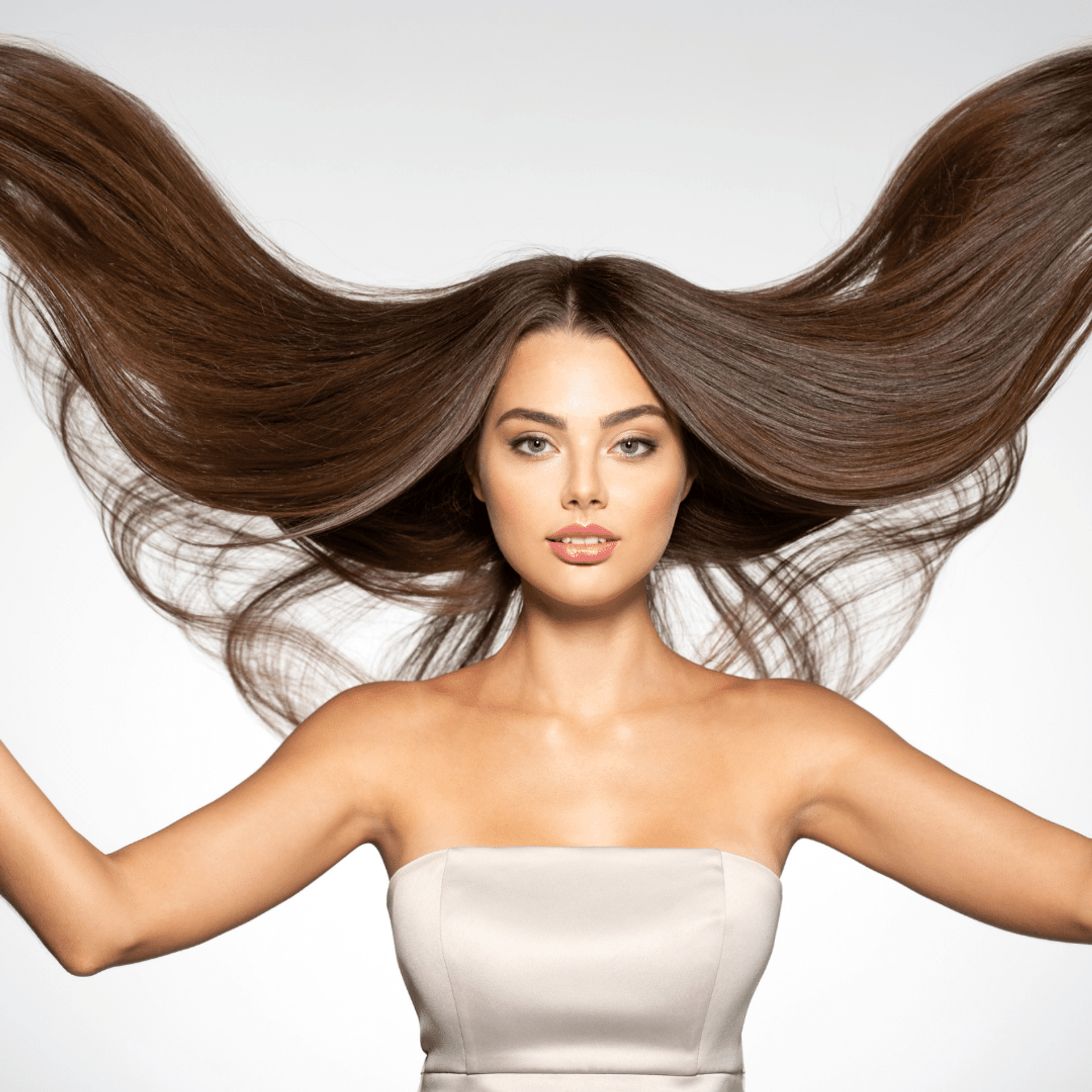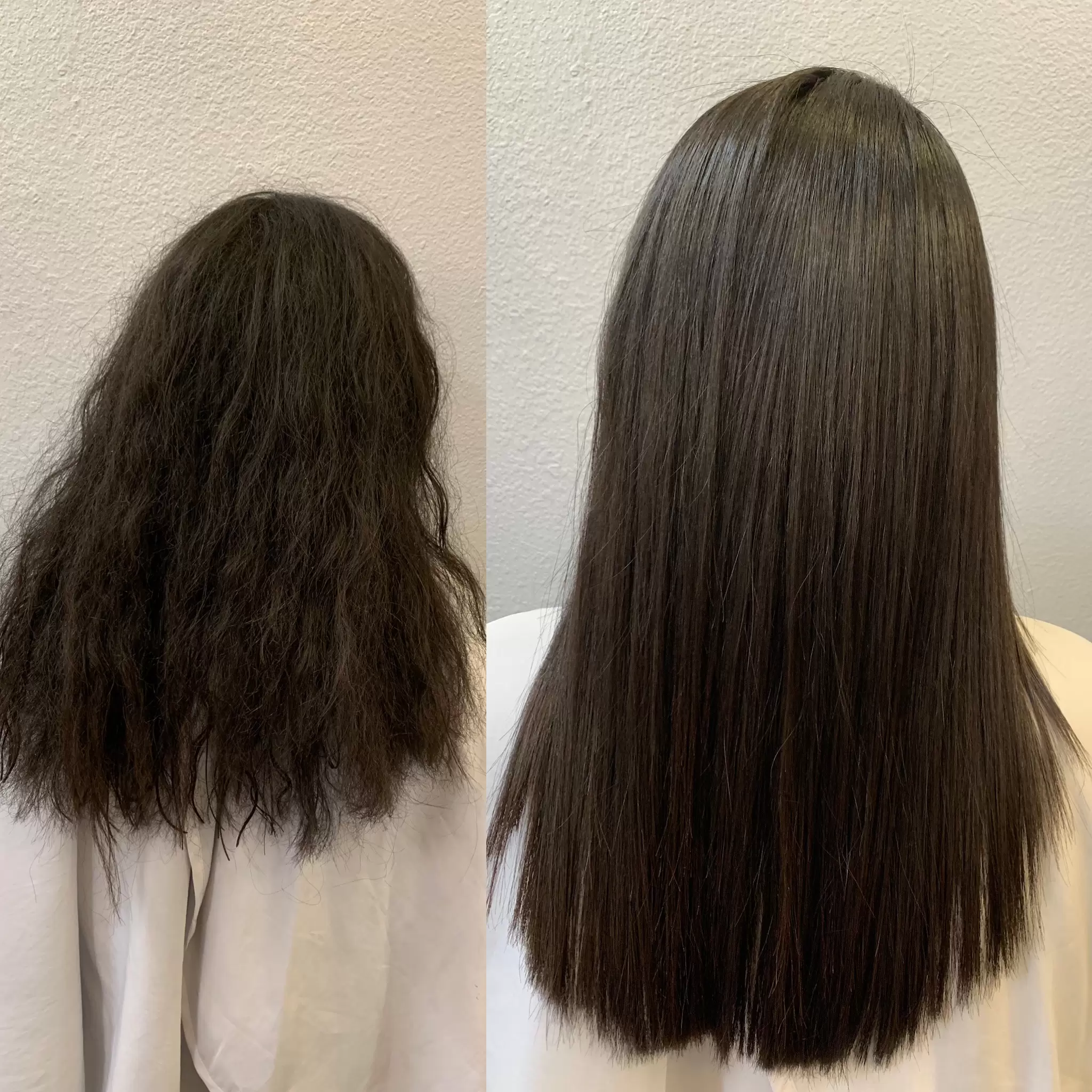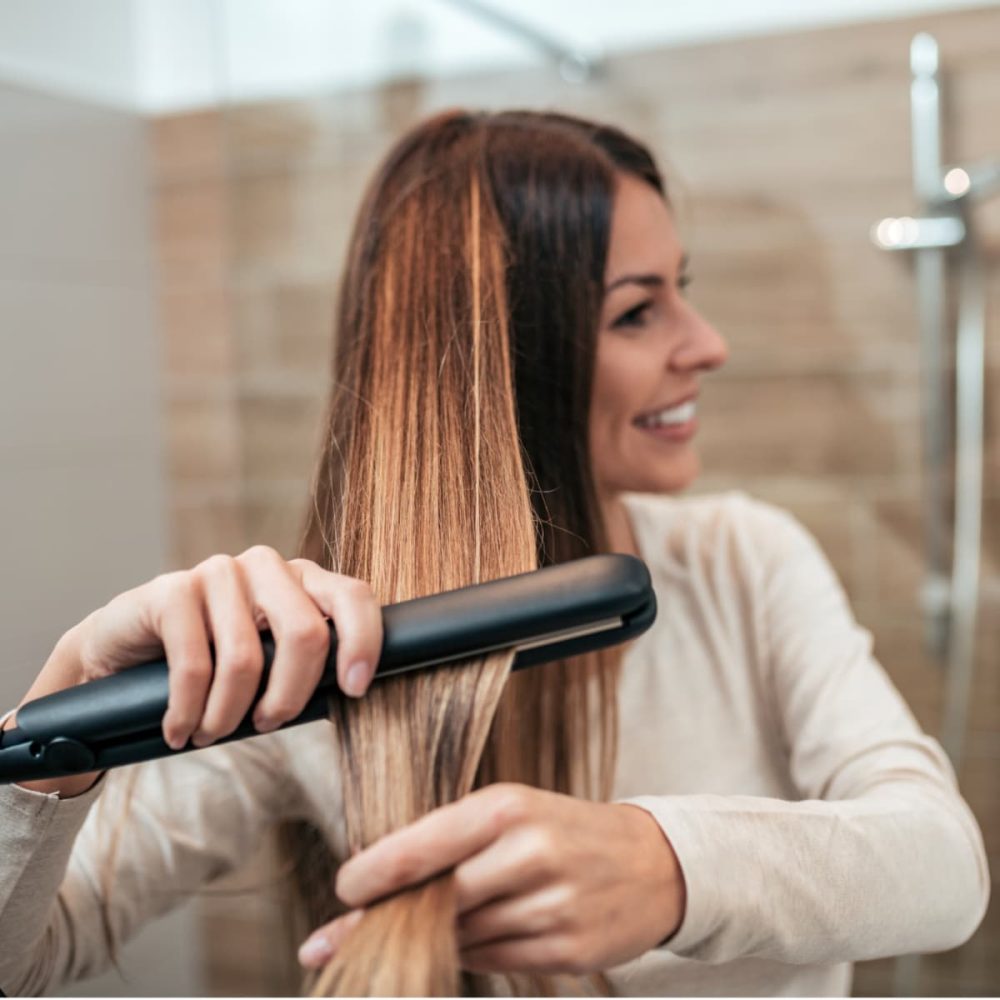Introduction to Hair Straightening Temperatures
What temp to straighten hair? Navigating the world of hair straightening can be tricky. It’s not just about using any high heat. The truth is, the perfect temperature depends on your hair’s unique type and condition. Think of hair as a delicate fabric; too much heat can damage it just like a silk blouse under a hot iron. That’s why the focus on using the correct temperature settings for your hair straightener is crucial. It ensures styling success while protecting your locks from unnecessary harm. In this section, you’ll learn the importance of temperature choice and how it affects the health and style of your hair. Whether you’re a styling pro or new to the game, understanding heat settings is your first step to flawless, sleek hair. Let’s dive into the basics of hair straightening temperatures and set the stage for more detailed insights in the categories to follow.

Identifying Your Hair Type
Determining the right temperature for hair straightening starts with identifying your hair type. Hair can be fine, normal, or thick and coarse. Each has its characteristics and needs.
Fine or Thin Hair
Fine or thin hair is delicate and prone to damage. It requires low heat during straightening. High temperatures can lead to breakage.
Normal or Medium Hair
Normal or medium hair is not too fine or too thick. It can handle moderate temperatures well.
Thick or Coarse Hair
Thick or coarse hair often requires higher temperatures. More heat is needed to achieve smooth, straight strands.
Understanding your hair’s type is vital. It ensures you use the right temperature setting. This will prevent damage and produce the best results.
Temperature Ranges for Different Hair Types
What temp to straighten hair? Choosing the right heat setting on your hair straightener is essential for achieving the perfect hairstyle without causing undue damage to your hair. Each hair type responds differently to heat, so understanding the ideal temperature range for your specific hair texture is important. Below are guidelines to help you determine what temperature to straighten your hair at, ensuring the best results for fine, normal, or thick hair.
Fine or Thin Hair
Fine or thin hair is sensitive to high heat and can easily sustain damage. Use a low temperature to protect your strands and maintain hair health. What temp to straighten hair? Ideal temperature range: 250°F to 300°F (121°C to 149°C). Start at the lowest setting and gradually increase as needed, but do not exceed 300°F.
Normal or Medium Hair
What temp to straighten hair? If your hair is not especially fine or thick, you likely have normal hair. This type can withstand a bit more heat. Aim for a moderate temperature range: 300°F to 360°F (149°C to 182°C). Always begin on the lower end and adjust if necessary for your hair’s needs.
Thick or Coarse Hair
Thick or coarse hair requires higher temperatures to achieve a smooth and sleek look. Set your straightener to a higher range to effectively style your locks. Suggested temperature range: 360°F to 410°F (182°C to 210°C). Even for thicker hair, it’s wise to start lower and only increase as needed to avoid damage.
It’s important to note that using a heat protectant is vital, no matter your hair type. It acts as a barrier to reduce heat damage and helps keep your hair looking healthy and vibrant. When choosing the right temperature for straightening your hair, be mindful not to set the heat higher than necessary, as this can lead to hair damage over time. Find the sweet spot where your hair straightens effectively without compromising its integrity.
The Role of Heat Protectants
Heat protectants play a critical role in safeguarding your hair from the high temperatures of straightening irons.
Benefits of Heat Protectants
They create a barrier on the hair shaft, which helps to reduce heat exposure. This barrier minimizes moisture loss and prevents the cuticle from becoming damaged. As a result, using a heat protectant can:
- Preserve the natural moisture of your hair,
- Prevent dryness and breakage,
- Maintain hair shine and smoothness,
- Protect hair color from fading due to heat,
- Enhance the overall effectiveness of your styling.
Heat protectants often contain ingredients like silicones or natural oils that coat the hair, providing these protective benefits.
How to Use Heat Protectants Properly
For best results, apply the heat protectant evenly throughout damp hair before any heat is applied. Make sure to cover all areas, especially the ends, which are more prone to damage. Combing the product through can help distribute it more evenly.
Choosing the Right Heat Protectant for Your Hair Type
Select a protectant suited for your hair type. There are various formulas available for fine, normal, or thick hair. Fine hair should look for lightweight sprays that won’t weigh hair down. Normal hair can benefit from a variety of protectants. Thick or coarse hair may need a thicker, cream-based protectant for best results.
Remember to always use a heat protectant regardless of the temperature setting on your straightening iron. This step is vital in maintaining the health and integrity of your hair. By incorporating heat protectants into your styling routine, you can help minimize the risks associated with heat styling and keep your hair in top condition.
 Tips for Effective Hair Straightening
Tips for Effective Hair Straightening
To get the best results when straightening your hair, follow these expert tips. They help avoid damage and make styling easier.
Start with Dry Hair
Before you use a straightener, ensure your hair is fully dry. Damp hair can suffer severe damage under high heat. Use a towel to remove moisture, then air dry or blow dry completely.
Use Sectioning Techniques
Divide your hair into sections for even straightening. Smaller sections mean more focus and less heat exposure per strand. Use clips to keep sections separate and work systematically.
Select the Right Straightening Iron
Choose a straightener suited to your hair type. Look for adjustable temperature controls and ceramic or tourmaline plates. These materials distribute heat evenly, reducing the chance of overheating your hair.
The Impact of Heat on Hair Health
Using the right temperature when straightening is key for hair health. Too much heat can cause irreversible damage. It’s important to find the ideal balance for your hair type. Below, we will explore common signs of heat damage and how to prevent it.
Signs of Heat Damage
Recognizing heat damage early can save your hair. Watch for these warning signs:
- Split ends hint at damage from high heat.
- Dry strands can result from too much straightening.
- Dull hair often means heat has stripped its shine.
- If hair feels rough or looks frizzy, it may be heat damaged.
- When hair breaks more than usual, consider heat as a cause.
- If your hair texture has changed, it might be due to excessive straightening.
Watch for any of these issues. They signal a need to adjust your heat styling habits. Tailoring your heat use to your hair type helps maintain healthy, vibrant hair.
How to Prevent Heat Damage
To help prevent heat damage, here are simple, effective steps:
- Choose the lowest temperature that works for your hair type.
- Always use a heat protectant before straightening.
- Avoid straightening your hair when it’s damp or wet.
- Limit the number of times you heat style each week.
- Invest in quality straighteners with adjustable settings.
- Consider air-drying or styles that don’t require heat sometimes.
By following these tips, you can ensure your hair stays healthy while enjoying straightened styles. Proper care allows you to keep heat damage at a minimum. Happy styling, and remember to treat your hair with the TLC it deserves.
 Maintaining the Health of Heat Styled Hair
Maintaining the Health of Heat Styled Hair
Keeping your hair healthy while regularly using heat styling tools is a necessity. By adopting the right maintenance routines and techniques, you can enjoy sleek styles without compromising the well-being of your tresses.
Regular Trims and Deep Conditioning
Chop off those split ends and rejuvenate your hair with routine trims every 6-8 weeks. Pair this with a deep conditioning treatment at least once a week. Look for conditioners with nourishing ingredients like argan oil or keratin. These elements help to restore moisture and strengthen your hair against potential heat damage. Remember, keeping your hair trimmed and well-moisturized aids in preventing breakage and maintaining a healthy appearance.
Investing in Quality Styling Tools
Don’t skimp on quality for hair tools. Choose flat irons or straighteners with adjustable heat settings that can cater to your hair type. Good hair straighteners will distribute heat evenly, reducing the risk of overheating and damaging your locks. Opt for models with ceramic or tourmaline plates that are less harsh on the hair. Also, take advantage of technology like the Cloud Nine Temperature Calculator to find your ideal heat setting. Investing in premium tools is an investment in your hair’s health and ensures that what temp to straighten hair at isn’t just a guess but a precise decision.